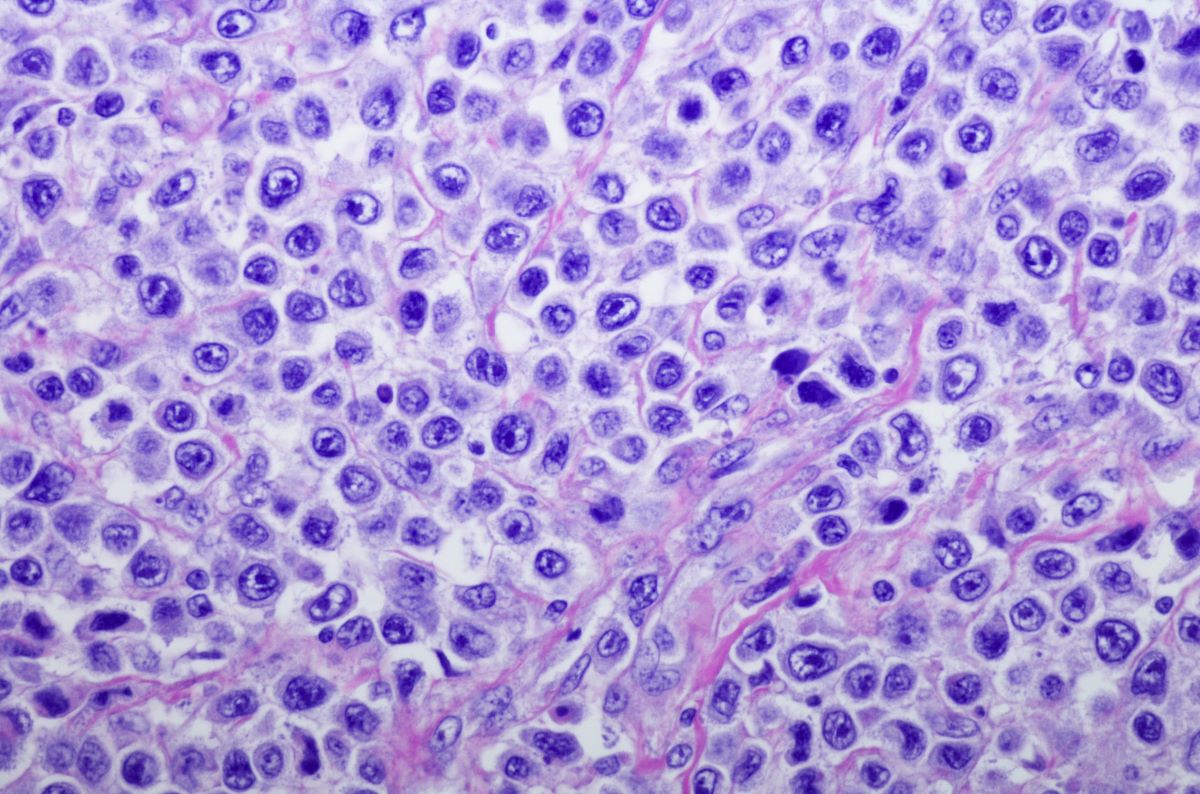
Pirtobrutinib can be safely used along with concomitant antithrombotic therapy (CAT) in treating B-cell malignancies, including mantle cell lymphoma, according to recent research.
A research team led by Heiko Konig, PhD, MD, a faculty at the Indiana University School of Medicine, assessed bleeding events in patients with B-cell malignancies in the phase I/II BRUIN study who had received pirtobrutinib, a noncovalent Bruton tyrosine kinase inhibitor (BTKi), along with CAT. They found that although these patients had a slightly higher rate of bleeding events compared with those who received pirtobrutinib without CAT, most of these events were low-grade. The researchers also found that no patients needed their dose of pirtobrutinib to be reduced or to discontinue treatment.
The group of 773 patients who had received one or more doses of pirtobrutinib included 317 with chronic lymphocytic leukemia (CLL), 166 with mantle cell leukemia (MCL), and 290 who were classified as other. Pirtobrutinib was administered daily in 28-day cycles until disease progression or discontinuation from toxicity, according to the researchers.
In addition, 216 of these patients were also given CAT. Excluding warfarin, CAT (using direct-factor XA inhibitors, heparin anticoagulants, or platelet aggregation inhibitors) was permitted at the time of enrollment in BRUIN. Patients were on pirtobrutinib with CAT for a median time of 10.6 months, compared with 9.3 months without CAT.
Bleeding events were found in 44.9% of patients with CAT, compared with 32.5% in the group of patients who didn’t receive CAT. However, over 90% of these events had a grade of ≤ 2, (as determined using version 5 of the Common Terminology Criteria for Adverse Events.
In patients with CAT, common bleeding events included contusion (22.7%), hematuria (5.6%), epistaxis (5.1%), petechiae (3.7%), and hematoma (3.2%). Only 2 (0.9%) of the grade 3 events in this group of patients were deemed to be related to pirtobrutinib: upper gastrointestinal bleeding with anemia and hemarthrosis from a knee injury.
Meanwhile, 11 (2%) of the patients without CAT had bleeding events grade ≥ 3, according to the researchers. The median time to onset of a bleeding event was 8.1 weeks in patients receiving CAT, while the median duration of bleeding events was 2.1 weeks. In five patients using CAT, bleeding events required dose interruption of pirtobrutinib, but none led to pirtobrutinib being reduced in dose or permanently discontinued.
“Pirtobrutinib is safe in patients requiring CAT,” the authors wrote.
Reference
Konig, H, Tam, C, Lamanna, N, et al. Comparison of bleeding-related events in patients who received pirtobrutinib with and without antithrombotic agents. Abstract CT-168. Presented at the Eleventh Annual Meeting of the Society of Hematologic Oncology; September 6-9, 2023; Houston, Texas.






 © 2025 Mashup Media, LLC, a Formedics Property. All Rights Reserved.
© 2025 Mashup Media, LLC, a Formedics Property. All Rights Reserved.